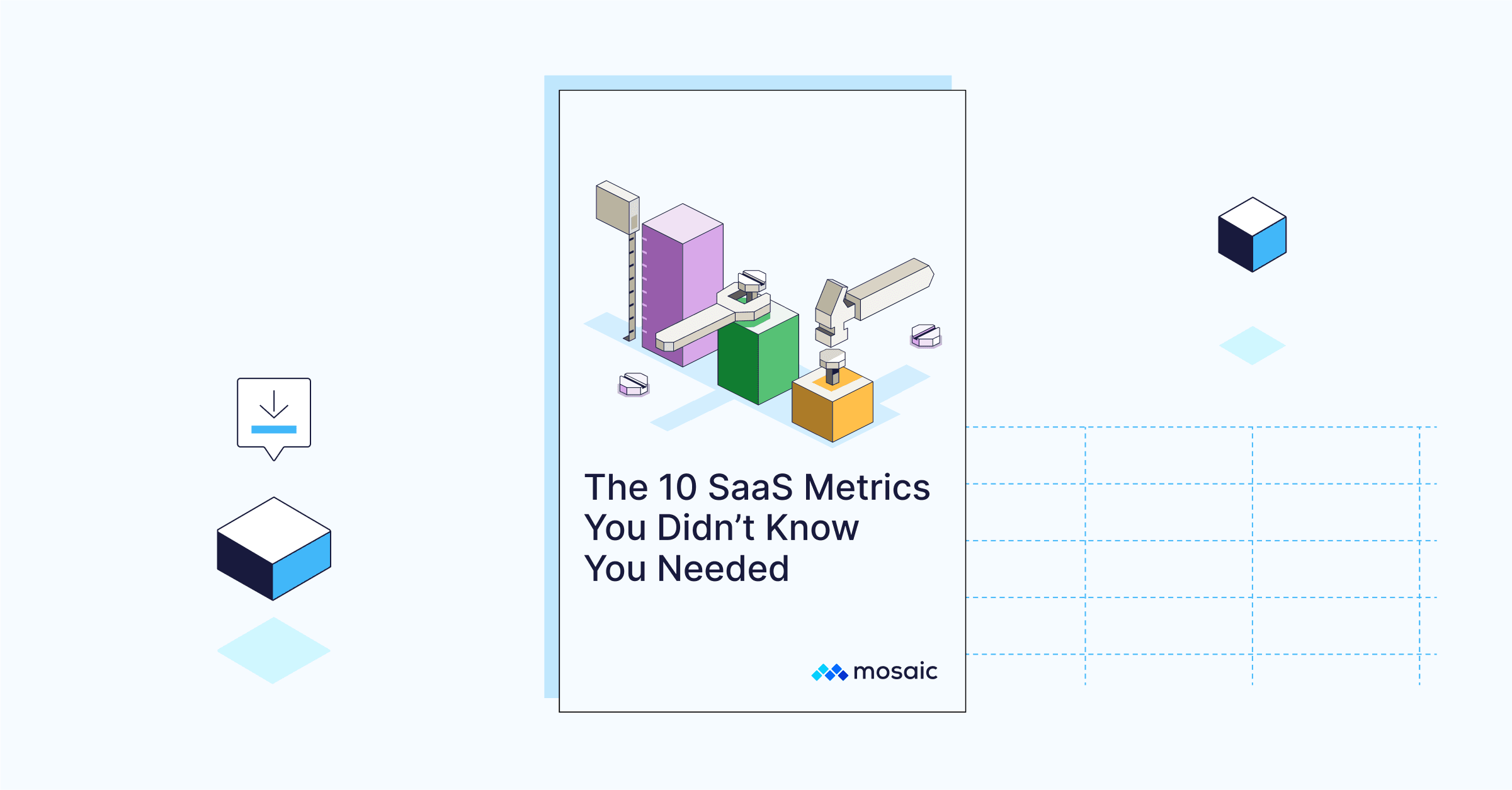Closing Rate
What is a Sales Closing Rate?
A sales rep’s closing rate is the number of deals they won compared against the total number of sales opportunities or deals they handled in a specific time period. Also called a win rate or a closed-won ratio, this sales funnel metric gives decision makers valuable visibility into both an individuals’ effectiveness, as well as the whole group’s productive capacity.
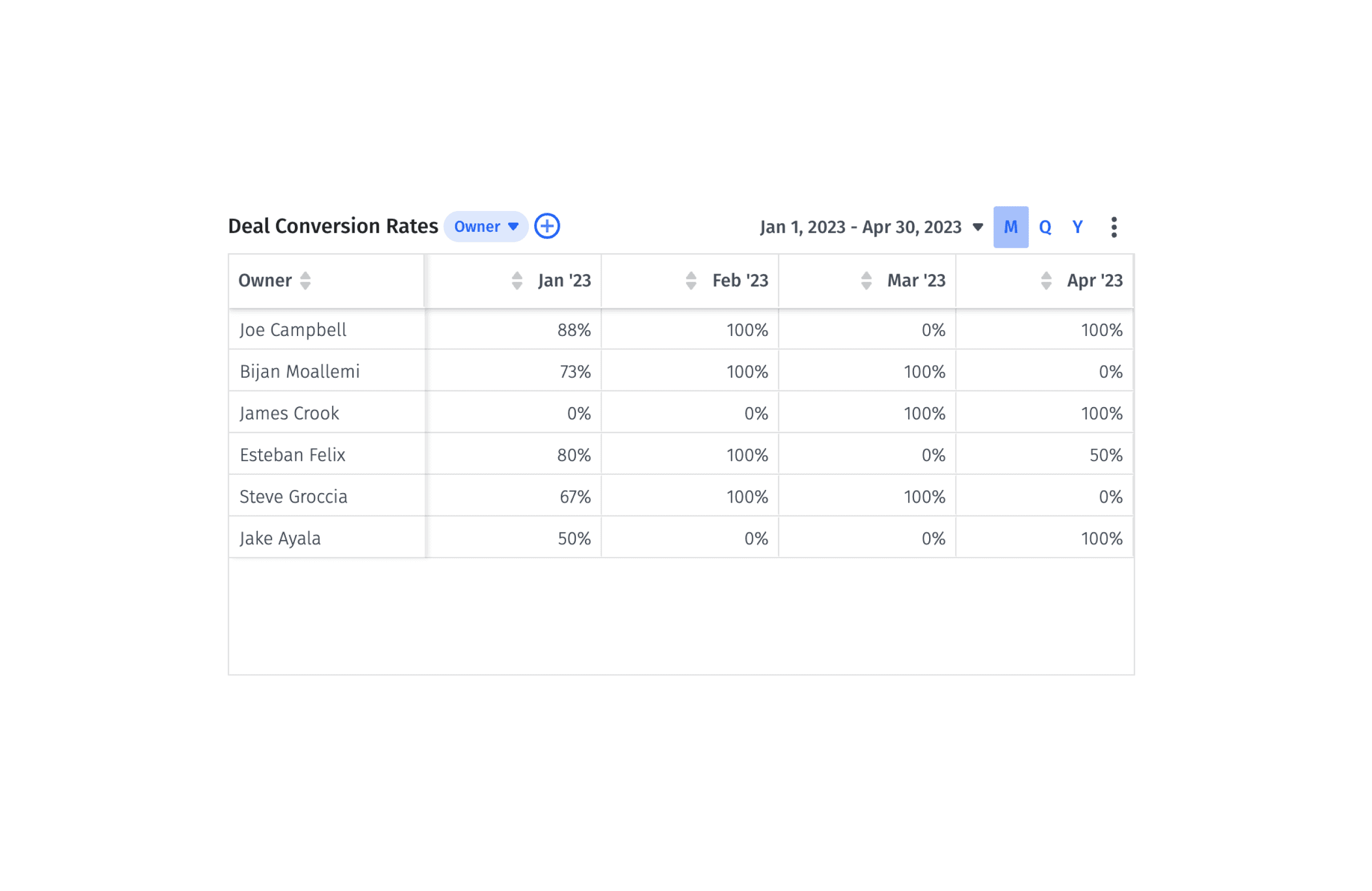
Categories
As an organization, the quickest, easiest way to improve your whole team’s sales conversion rate is to learn to calculate, monitor, and boost the closing rate of individual sales reps over time.
Remember that when you improve your overall percentage of won deals, you spend fewer resources on lost opportunities. With the right data analysis tools and processes, tracking your sales reps’ closing rates over time can give leaders unrivaled visibility into how sales performance affects the company’s financial position.
Table of Contents
The Formula to Calculate Closing Rate
To calculate a salesperson’s closing rate, simply divide their closed-won deals by the overall number of opened opportunities that came their way. Take your answer and multiply it by 100. The result is an easily-to-communicate percentage.

Note the importance of using the same date range for the two metrics involved. For example, you don’t want to divide a seasoned sales rep’s yearly closed-won number by their monthly total closed deals worked.
Closing Rate Calculator
Your Closing Rate
0 %
Closing Ratio Examples
Consider a SaaS business that performs various marketing and sales activities to connect with prospects.
Example #1:
A SaaS company’s PR team earns media coverage and many folks who were already comparing rival technologies take note and become curious. Within a week, 700 of them have scheduled demos. A high-performing AE, Alex, is assigned 200 of these opportunities and wins 48 of them. Apply the above formula to Alex’s performance:
Closing rate = (closed-won/total opportunities)x100
24 = (48/200)x100
Alex’s closing rate for the time period is 24%. Note the overall number of opportunities that enter the team’s sales pipeline (700) is not a factor in Alex’s personal closing rate equation.
Example #2:
An executive from a SaaS business hosts a live panel webinar about the emergence and creative uses of AI in finance.To access the event, 525 registrants provide their email address and agree to receive outreach and follow up messages from the host’s sales teams.
After executing all the appropriate steps in the sales funnel, Taylor, a dynamic sales rep, manages to wrangle and win 9 new customers from the 150 new email addresses allotted to their pipe. In the process, Taylor reveals that it wasn’t uncommon for two or three attendees from the same team to sit in on the webinar and debrief together later. Taylor’s closing rate looks like this:
6 = (150/9)x100
Taylor’s closing rate for this lead generation effort is 6%. As part of a circumspect analysis, Taylor’s team acknowledges the nuances that contribute to a lower closing ratio:
- Attendees weren’t change-ready. Unlike the high-quality leads in example #1, folks who viewed the panel discussion were in the earlier stages of the software procurement process. They’re still learning they have a problem to solve.
- Multiple email addresses represented the same lead. Some potential licensees had two or three folks sign up to attend the conversation.
- The webinar’s topic wasn’t product-specific. Coverage centered on developing trend, not a specific pain point and SaaS solution.
In both examples, it’s clear that sales managers must view – and work to optimize – a sales rep’s closing ratio within the context of other sales and finance metrics.
Why It’s Important To Track Closing Rate
Leaders who have a continual eye on accurate closing rate metrics can assess the effectiveness of sales processes and tools. Tracking closing rate helps sales and finance teams:
- Decide how well (or poorly) the marketing team’s campaigns produce quality leads
- Appraise the changing quality of incoming opportunities (do they tend to be higher-LTV, recurring, or referring customers?)
- Track the return-on-investment of talent management and commissions
- Guide inter-departmental collaborations and improvements
- Compare sales cycle data to find and eliminate pipeline bottlenecks or pitfalls in the various stages of a deal
- Reveal how various initiatives and operational improvements affect a sales professional’s ability to win contracts
- Provide reliable reports – both actuals and forecasts – to board members and other stakeholders
How Finance Can Help Increase Sales Closing Ratios
Here we’ll list a variety of tactics you can – and should – use to improve any AE’s closing rate. But by far, the most lasting and repeatable way to improve a rep’s closing rate isn’t a tactic; it’s a strategy. And that strategy is to improve the overall relationship between the sales team and the finance team.
Recognize How the Sales and Finance Relationship Impacts Closing Rate
Traditionally, AEs have been driven to move quickly. Sure, some of their performance metrics point back to a seller’s grit, creativity, articulacy, and persuasion. But above all, reps know that the faster they work, the more profitable their results.
And while finance folks also want the sales team to move fast and close deals, there’s a level of data hygiene you have to push for to ensure you can see both hazards and bottlenecks that can hinder, hurt, or halt a sales rep’s deals later on.
For example, inaccurate or inadequate information in an opportunity’s lead page can turn into problems with contractual conditions or even invoicing later. Another example could be the unfair financial penalization of a newer sales rep whose ramp time wasn’t factored into their starting performance. Perhaps worst of all is the muddy models of pipeline data that’s based on historical data alone. When sales folks can’t or don’t accurately value their mid-stage opportunities, strategy and board meetings are less productive, sometimes hurting capital allocation plans.
Improve Internal Relationships for an Ever-Increasing Close Ratio
Create harmony between the sales and finance functions by giving them both what they need to fulfill their purpose – without slowing down either of them.
Start by changing the AE’s user experience when creating and administering an opportunity through your single-source-of-truth tool, usually a CRM. Self-learn or ask your software publishers what automations are available that you can utilize to cut manual data entry and manipulation. Revisit and cut away any unnecessary or redundant fields. Ensure all your software is doing all calculations (like contract renewal dates) so that reps aren’t doing math. Brainstorm ways to configure your CRM to empower them to get back to doing what they do best.
Next, add in fields that help both groups do their jobs. For example, configure your ARR (and renewal ARR) calculations to be as accurate as possible, and have potential commissions auto-displayed as well. Include a drop-down to indicate the likelihood of expansions, upsells, and renewals, so finance can project pipe more reliably.
Finally, reverse the flow of information so that finance folks are empowering sales reps to tell a more persuasive story. As you can view in this webinar, one SaaS provider’s finance team learned about a bottleneck in the “overcoming barriers” phase of their colleagues’ sales cycles, specifically around the financing structure of the agreement. The finance team generously wrote up a compelling “why” for sales reps to explain to potential customers reasons yearly billing was more beneficial for everyone involved.
Track Your Closing Rate with Mosaic
To improve your AEs’ closing rates, you must monitor them regularly. When leaders check closing rates on a whim or only when it comes up in board meetings, the fleeting attention simply doesn’t inspire improvement.
Mosaic tracks your individuals reps’ closing rates automatically based on their daily sales activities. Yes, CRM platforms like Salesforce or Hubspot do offer a bare-bones version of the closing rate per rep, but they lack…
- The ability to show the ratio’s decline, increase, or fluctuations over time
- The intelligence to factor in nuances like the ramp-up time inherent in every sales person’s performance journey
- The intuition to pull in financial data, thus limiting their output to sales metrics relevance and not, say, headcount or talent management strategies
But here’s where your bespoke mosaic instance goes to work. Once integrated with your ERP, HRIS, and CRM, You can configure your personal space, or “dashboard,” to reveal this metric for every person on your sales team, along with a variety of other enlightening percentages.
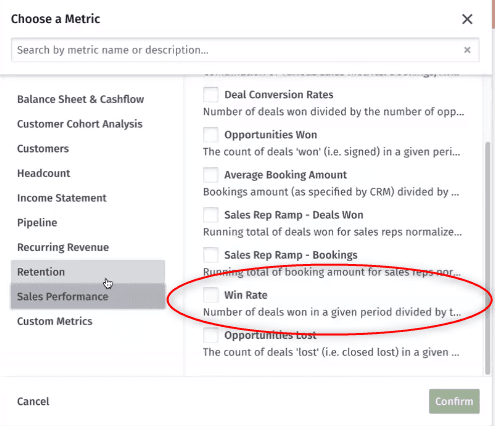
Customize your “Personal Space” in Mosaic (get a demo to see it in action).
You can apply sales data (like closing rate) directly to financial and investor relations by using the closing rate and in-progress deals to project the likelihood and value of your current pipeline.
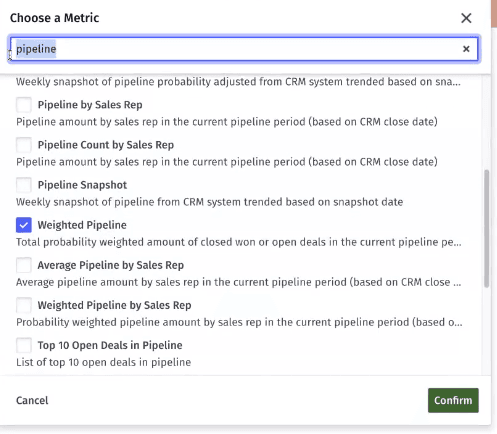
Customize your Sales Pipeline Dashboard in Mosaic (get a demo to see it in action).
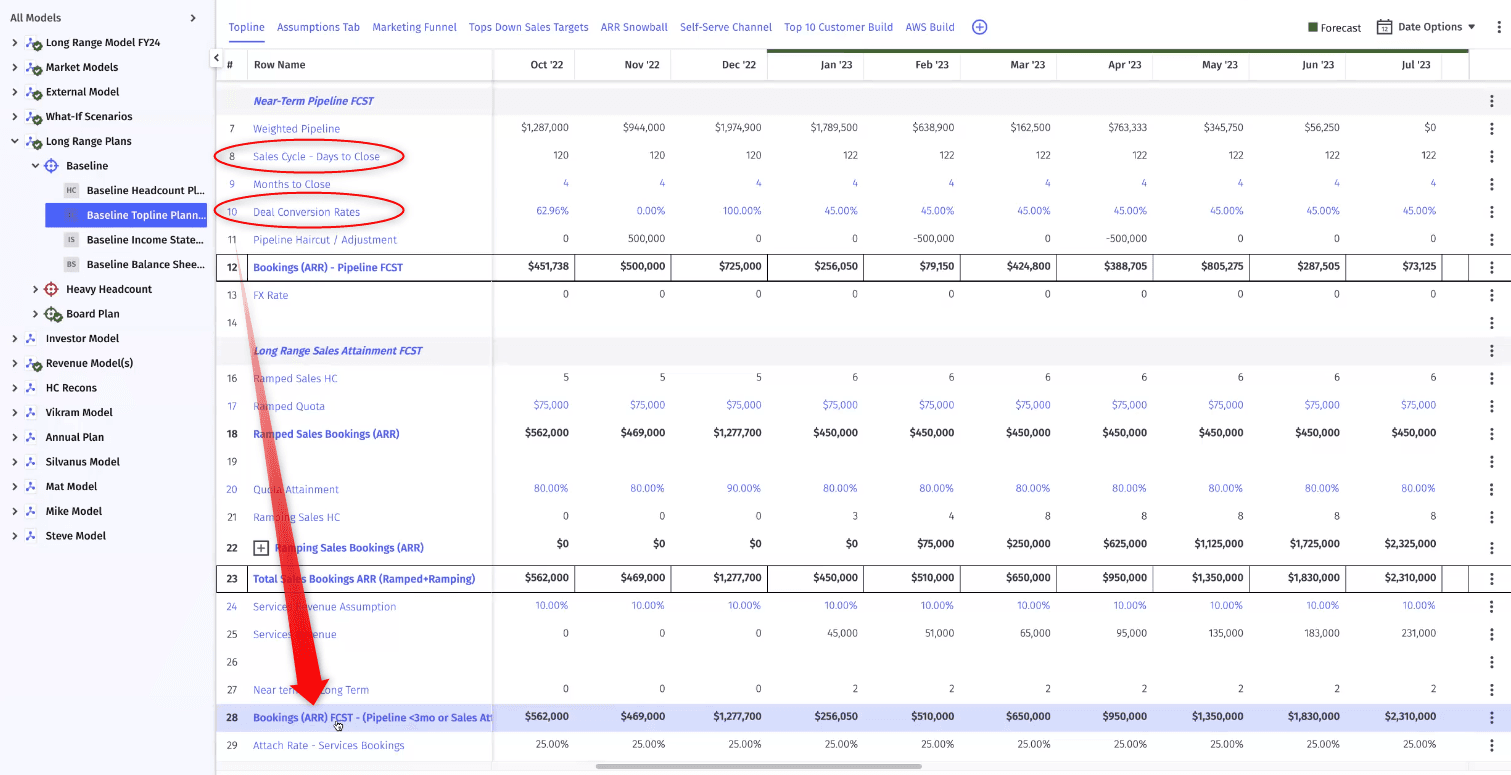
Now that you can see a rep’s closing rate within the broader picture of other sales and finance metrics, you can begin to plan the best operational adjustments to get the results you want.
Reps’ closing rate is one indicator of overall deal velocity and potential profitability. In context with the many other equally important indicators available to you with Mosaic, you’ll get real mileage toward achieving your whole organization’s strategic goals.
Sales Closing Rate FAQs
What is the difference between closing rate and win rate?
A sales rep’s closing rate and win rate are the same percentage. These are different terms for the same thing.
What is a good closing rate in SaaS?
Is close rate the same as conversion rate?
Explore Related Metrics
Own the of your business.

